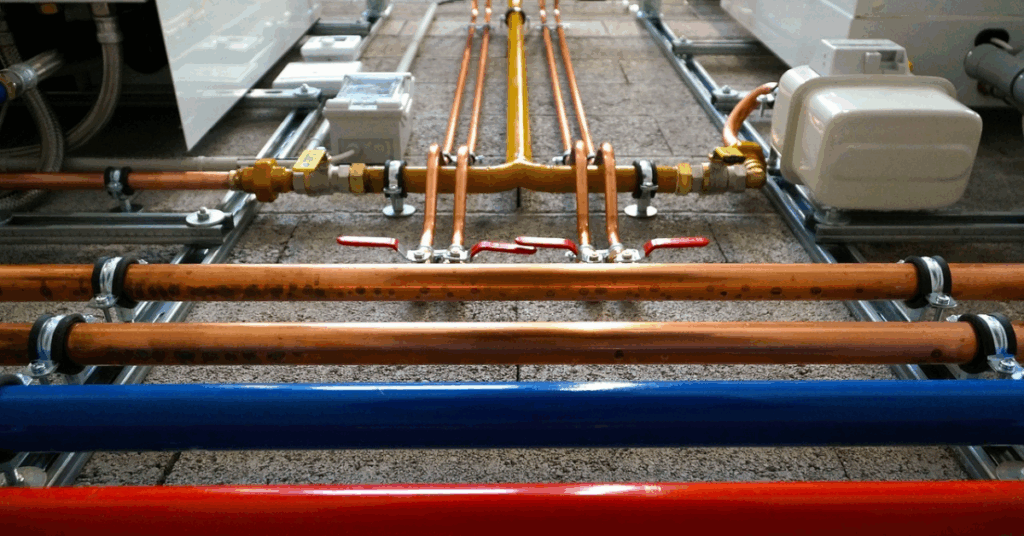Whether you’re constructing a new building, remodeling your home, or undertaking a commercial development, having a well-thought-out plumbing system is essential. And at the heart of any efficient, sustainable, and code-compliant plumbing system is a plumbing designer. If you’re currently looking for a plumbing designer, you’re not alone—demand for skilled professionals in this field continues to rise as building codes grow more complex and sustainability becomes a priority.
But what exactly does a designer do, and how can you find the right one for your project? Let’s explore what makes plumbing designers so crucial and how to choose the best fit for your needs.
Table of Contents
What Is a Plumbing Designer?
A plumbing designer is a specialized professional responsible for designing safe, efficient, and code-compliant systems in residential, commercial, and industrial settings. Their work goes far beyond simply placing pipes and drains. A good plumbing designer will take into account:
- Water supply systems (hot and cold)
- Drainage and waste systems
- Ventilation
- Stormwater management
- Backflow prevention
- Water conservation strategies
- Integration with mechanical and HVAC systems
These professionals often use software tools like AutoCAD, Revit, or BIM (Building Information Modeling) to create detailed system layouts, ensuring everything fits within architectural and structural frameworks. They also prepare documentation for permits, compliance, and construction.
Why Hiring a Plumbing Designer Matters
You might wonder whether hiring a plumber alone is sufficient. The key distinction is that plumbers install systems, whereas designers plan them. For any substantial project—especially those requiring municipal approval or involving complex layouts—working with a plumbing designer is critical.
Here’s why:
- Code Compliance: Plumbing codes vary by region and are frequently updated. A designer stays current with regulations and ensures your system meets all safety and health standards.
- Efficiency: A well-designed system uses less material, minimizes water and energy waste, and requires less maintenance.
- Cost Savings: Investing in good design up front reduces the risk of costly mistakes, delays, or retrofits later.
- Sustainability: With growing emphasis on green building, a plumbing designer can incorporate water-saving features like low-flow fixtures, greywater systems, and rainwater harvesting.
- Coordination: In large projects, plumbing must be carefully integrated with electrical, mechanical, and structural components. Designers work collaboratively with architects and engineers to ensure everything fits together.
When Do You Need a Plumbing Designer?
Hiring a designer makes sense in several scenarios:
- New Construction: Whether residential, commercial, or industrial, any new building requires a coordinated plumbing plan.
- Major Renovations: Remodeling bathrooms, kitchens, or entire floors often calls for reworking plumbing systems.
- Commercial Projects: Offices, restaurants, schools, hospitals, and retail spaces need carefully designed plumbing infrastructure.
- Sustainable Building Initiatives: If you’re aiming for LEED certification or similar green standards, a plumbing designer can help align your systems with those goals.
Qualities to Look For in a Plumbing Designer
Finding the right professional requires more than a quick search. Here are some key qualities and credentials to look for:
- Experience and Portfolio: Look for designers who have experience with projects similar in size and type to yours. Ask to see examples of past work.
- Certifications and Education: In the U.S., many reputable designers are certified by the American Society of Plumbing Engineers (ASPE). Others may be licensed engineers (PEs) with plumbing design expertise.
- Familiarity with Codes: Ensure they are knowledgeable about local plumbing codes, health regulations, and industry best practices.
- Technical Proficiency: They should be skilled in modern design software and capable of producing precise, readable plans.
- Communication Skills: Since plumbing design requires coordination with other professionals, strong communication is essential.
- References and Reviews: Always check reviews, testimonials, and references from previous clients.
Where to Find a Plumbing Designer
Finding the right designer can be done through several avenues:
- Professional Associations: Organizations like ASPE maintain directories of certified plumbing designers.
- Engineering and Architecture Firms: Many multi-disciplinary firms have in-house plumbing designers.
- Online Platforms: Websites like Upwork, LinkedIn, and specialized engineering job boards can connect you with freelance or contract professionals.
- Local Building Departments: They often have lists of approved or frequently used design professionals.
- Referrals: Ask your architect, contractor, or builder if they can recommend someone they’ve worked with.
Final Thoughts
A good designer isn’t just a technical necessity—they’re a strategic partner in making your project a success. From ensuring safety and compliance to enhancing long-term efficiency, the value they bring far outweighs the upfront cost. Whether you’re developing a single-family home or a multi-story office tower, investing in expert design pays dividends in durability, performance, and peace of mind.
So if you’re looking for a designer, take your time to research, vet candidates thoroughly, and select someone whose expertise aligns with your goals. Your building—and your budget—will thank you.

